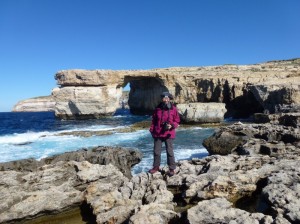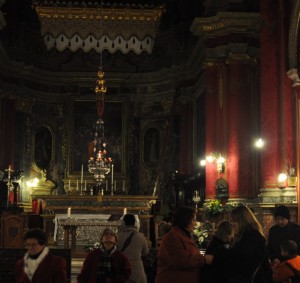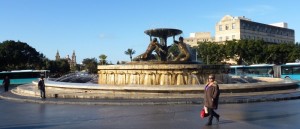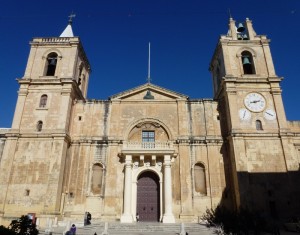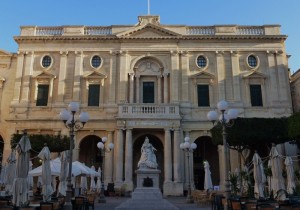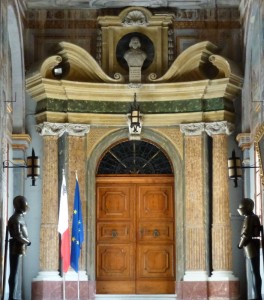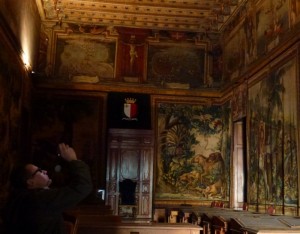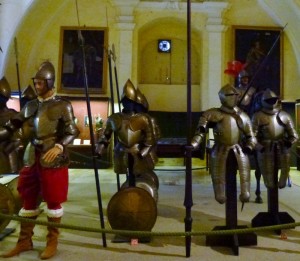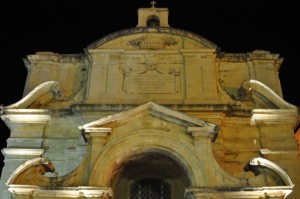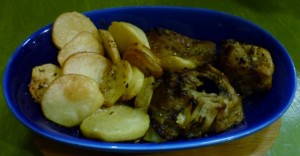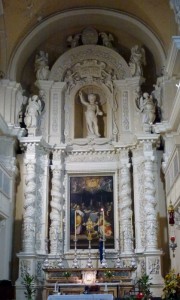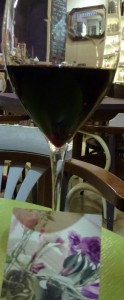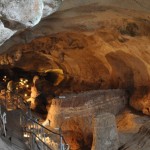Mediterranean Island Hopping: Malta February 2-3
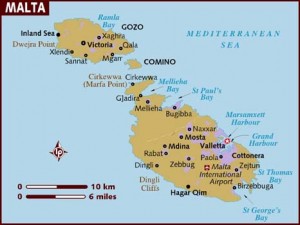 |
Background
The Republic of Malta (commonly known as Malta) is an archipelago situated in the centre of the Mediterranean, 80km south of Sicily. Malta comprising a group of seven islands is one of the world’s smallest countries. Its total area is 316 square kilometres and its 450,000 inhabitants (2011 estimate) reside only on the largest three islands namely Malta, Gozo and Comino. The terrain is low and rocky with coastal cliffs.
Malta has a long and rich history with human inhabitation since 5200BC. Given its strategic location, Malta has been occupied and ruled by foreign powers including the Phoenicians, Carthaginians, Greeks, Romans, Byzantines, Arabs, Normans, Aragonese, Hapsburg Spain, Knights of St John, French and the British. Malta gained independence from the UK in 1964 and became a republic in 1974. It joined the European Union in 2004 and became part of the Eurozone in 2008.
Malta has a long Christian legacy. According to the Acts of the Apostles in the Bible, St Paul was shipwrecked on Malta. Today, Catholicism is the official religion. Maltese and English are both the national languages.
Malta has a GDP and GDP per capita (nominal) of US$8.9 billion and US$21,028 (2011 estimate). In terms of GDP (PPP), the figures were higher at US$10.757 billion and US$25,428 respectively. Malta is rich in tourism resources as a result of its climate, location, scenery, arts, architectures and history. It boasts three World Heritage Sites (WHS) namely the City of Valetta, Hal Saflieni Hypogeum and seven megalithic temples found on the islands of Malta and Gozo which are some of the oldest free-standing structures in the world. Tourism infrastructures are well-developed and tourism contributes some 15% of its GDP.
February 2 Saturday
I departed London on a Ryanair flight at 6:50am and arrived on the island of Malta before 11am. The aircraft had a hard and noisy landing. The island has a total area of 246 square kilometres and a population of 370,000 (Eurostat).
I have flown with Ryanair a couple of times but never like it. First, it flies from Luton or Stansted airport. Second, the whole experience is unpleasant. A passenger must check in on-line and print out his/her own boarding pass. If not, he/she has to pay a lot for the check-in service at the airport. The seats are fixed and one has to sit upright. I am short but still suffer from lack of leg room. Third, it is not much cheaper since one has to pay £15 for a piece of check-in luggage prepaid online or £60 a piece without pre-payment, £6 as administration fee and another £6-8 for use of a debit/credit card. I subsequently paid some £80 for a one-way ticket to Malta. I have been travelling mainly with Cathay Pacific Airways and Dragon Air in the past two years and am spoilt by their good services. I can no longer put up with Ryanair’s poor service and I shall not fly with it again unless I have no alternative!
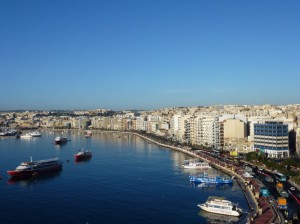 |
Once I stepped out of the airport, I immediately formed a nice impression of Malta. The sun is shining with a blue and cloudless sky. The airport is small but efficient. Locals speak English and are helpful. Life seems laid-back but things are moving efficiently. The public transportation system is good and relatively cheap. One can get a day pass for €2.60 or a week pass for €12.60 with unlimited travel on local buses. A Heritage Malta Pass with access to 20 museums and attractions only cost €35.
I brought a day pass and arrived at Silema Marina Hotel around 12:30pm. I booked a single room for less than €20 a night. The room is basic but the location is the draw. I took a bus to Valetta and had a wonderful afternoon exploring this architectural wonderland on foot.
Valetta, capital of the island and a WHS is inextricably linked to the history of the military and charitable Order of St John of Jerusalem. It was ruled successively by the Phoenicians, Greeks, Carthaginians, Romans, Byzantines, Arabs and the Order of the Knights of St John. Valletta boasts 320 monuments, all within an area of 55 ha, making it one of the most concentrated historic areas in the world.
The old city was mainly built by the Knights of the Order during the 16th-18th centuries. The buildings of the Order are harmoniously integrated within the uniform grille of the streets: Co-Cathedral of St John (1573), Palace of the Grand Master (end of 16th century), Auberge de Castille et Leon (1574), Auberge de Provence (1571-75), Auberge d’Italie (1574), Auberge d’Aragon (end of 16th century) and Infirmary of the Order (end of 16th century). There are numerous churches and the notable ones include Co-Cathedral of St John, Our Lady of Victory Church, St Barbara Church, St Paul’s Anglican Cathedral and St Paul’s Shipwreck Chapel. The squares, narrow alleys and old buildings with balconies are most charming and atmospheric.
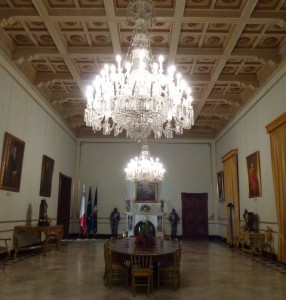 |
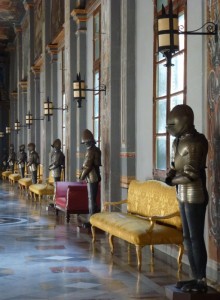 |
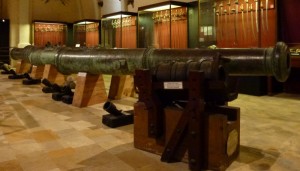 |
I brought a Heritage Malta pass. There was so much to see and I could only manage to visit the National Museum of Archaeology, Palace Armoury and Palace State Rooms before the museums closed. The exhibits in the Armoury are outstanding. The illustrations are generally very good enabling me to learn about Malta’s interesting history in particular the Great Siege of Malta in 1565 which was essentially the climax of an escalating contest between the Christian alliance and the Ottoman Empire for control of the Mediterranean. The Turks invaded the island but the Knights together with the 4-5,000 Maltese people finally won the siege, one of the bloodiest and most fiercely contested in history.
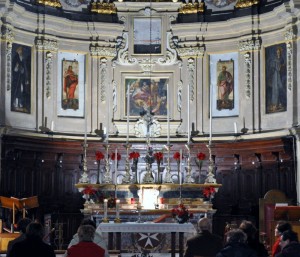
|
When I heard bells of churches ringing around 5pm, I went into the Co-Cathedral of St John which was filled with pious church-goers. I also went to see the Jesuits Church built by Bishop Tommaso Gargallo in November 1592. Other churches were closed.
The décor of a small restaurant near the Jesuits Church caught my attention. I went in and had a Maltese dish – rabbit cooked in champagne. A delicious main course and a glass of nice Maltese red wine only cost me €21.
February 3 Sunday
My first stop today was the Sunday market at Marsaxlokk Bay, an active fishing village in the southern part of the island. The Ottoman Turks landed here in 1565 marking the beginning of the Great Siege. This village is vibrant, atmospheric and photogenic filled with colourful boats, people and activities. Fresh tuna was sold at €2 each. I found a local café and had a catch of the day and a local beer for €13. The fish was fine but cannot be compared with those I have in Hong Kong.
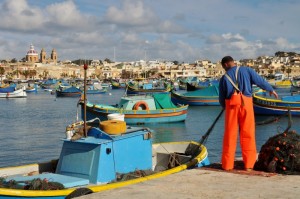 |
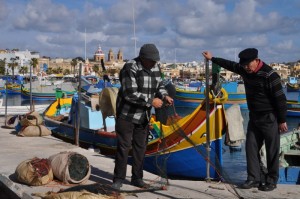 |
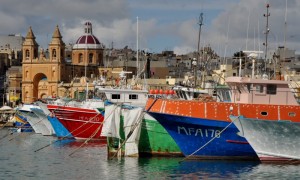 |
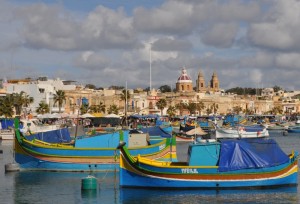 |
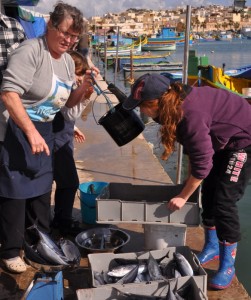 |
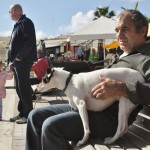 |
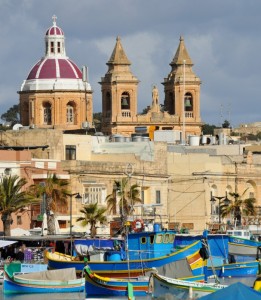 |
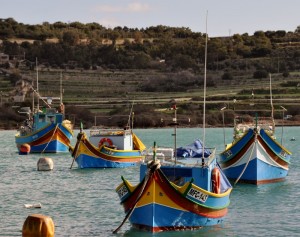 |
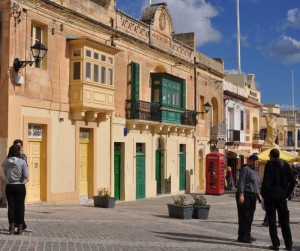 |
My next stop was Ghar Dalam Cave (close to Marsaxlokk Bay). The 144m-long cave shows evidence of settlement in Malta dating back some 7,400 years.
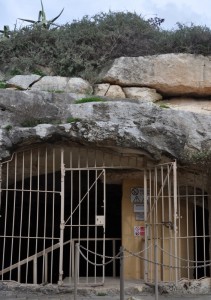 |
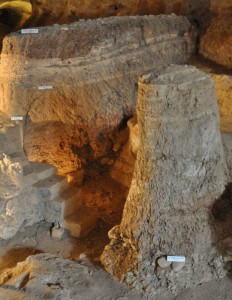 |
The last stop was Tarxien Temple (a WHS) consisting of three separate but attached, temple structures in a residential area. This temple is known for its intricate stonework and screens with spiral designs. The first, middle and east temple has been dated to approximately 3100 BC, 3000 BC and 3100 BC respectively. The middle temple is unique in that it has three pairs of apses instead of the usual two.
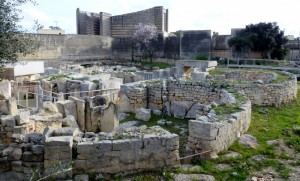 |
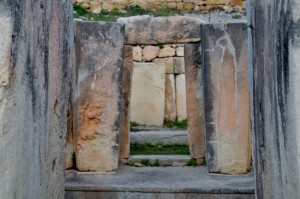 |
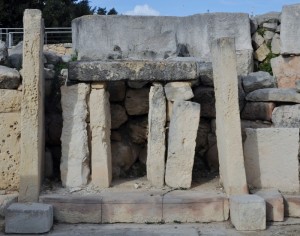 |
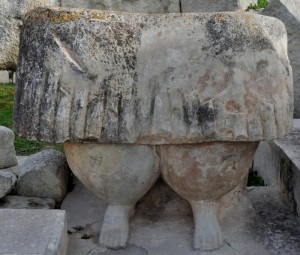 |
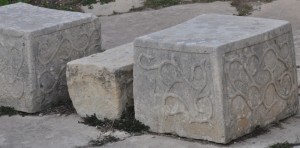 |
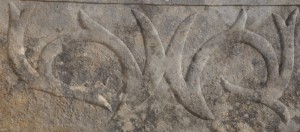 |
(I also wanted to visit the nearby Hypogeum which is a WHS. Visitors have to pay an entrance fee of €20 with reservation or €25 on Sunday without reservation as only ten persons are permitted to enter every hour. Hence I decided to make reservation and come back later)
As it was too late to travel to see other temples, I jumped on a bus heading to Conspicua, Vittoriosa and Senglea surrounding the Grand Harbour with a good view of Valetta. These three cities were fortified by the Knights of St John. Unfortunately the bus stopped after five minutes as the driver believed one of the passengers was using a fake ticket and asked an inspector to come. All passengers were annoyed: no one knew when the inspector would arrive. I decided to take another bus to St Paul’s Bay and Bugibba. Unfortunately by the time the bus reached St Paul’s Bay, it was too dark to see the island. I did not bother to get off at all. I was back to Silema an hour later. I wish I had gone back to stroll along the Grand Harbour or do something in Valetta instead of spending over two hours on the bus.


